Related Research Articles

Printmaking is the process of creating artworks by printing, normally on paper, but also on fabric, wood, metal, and other surfaces. "Traditional printmaking" normally covers only the process of creating prints using a hand processed technique, rather than a photographic reproduction of a visual artwork which would be printed using an electronic machine ; however, there is some cross-over between traditional and digital printmaking, including risograph.

Woodcut is a relief printing technique in printmaking. An artist carves an image into the surface of a block of wood—typically with gouges—leaving the printing parts level with the surface while removing the non-printing parts. Areas that the artist cuts away carry no ink, while characters or images at surface level carry the ink to produce the print. The block is cut along the wood grain. The surface is covered with ink by rolling over the surface with an ink-covered roller (brayer), leaving ink upon the flat surface but not in the non-printing areas.

Monotyping is a type of printmaking made by drawing or painting on a smooth, non-absorbent surface. The surface, or matrix, was historically a copper etching plate, but in contemporary work it can vary from zinc or glass to acrylic glass. The image is then transferred onto a paper by pressing the two together, using a printing-press, brayer, baren or by techniques such as rubbing with the back of a wooden spoon or the fingers which allow pressure to be controlled selectively. Monotypes can also be created by inking an entire surface and then, using brushes or rags, removing ink to create a subtractive image, e.g. creating lights from a field of opaque colour. The inks used may be oil or water-based. With oil-based inks, the paper may be dry, in which case the image has more contrast, or the paper may be damp, in which case the image has a 10 percent greater range of tones.
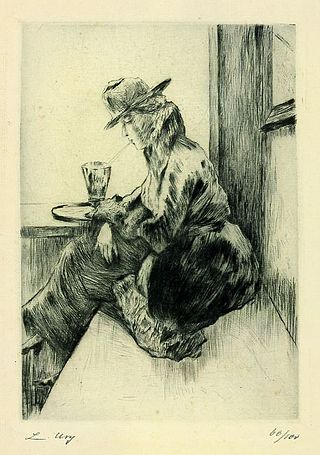
Drypoint is a printmaking technique of the intaglio family, in which an image is incised into a plate with a hard-pointed "needle" of sharp metal or diamond point. In principle, the method is practically identical to engraving. The difference is in the use of tools, and that the raised ridge along the furrow is not scraped or filed away as in engraving. Traditionally the plate was copper, but now acetate, zinc, or plexiglas are also commonly used. Like etching, drypoint is easier to master than engraving for an artist trained in drawing because the technique of using the needle is closer to using a pencil than the engraver's burin.
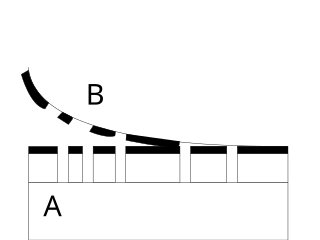
Relief printing is a family of printing methods where a printing block, plate or matrix, which has had ink applied to its non-recessed surface, is brought into contact with paper. The non-recessed surface will leave ink on the paper, whereas the recessed areas will not. A printing press may not be needed, as the back of the paper can be rubbed or pressed by hand with a simple tool such as a brayer or roller. In contrast, in intaglio printing, the recessed areas are printed.

Intaglio is the family of printing and printmaking techniques in which the image is incised into a surface and the incised line or sunken area holds the ink. It is the direct opposite of a relief print where the parts of the matrix that make the image stand above the main surface.
Monoprinting is a type of printmaking where the intent is to make unique prints, that may explore an image serially. Other methods of printmaking create editioned multiples, the monoprint is editioned as 1 of 1. There are many techniques of mono-printing, in particular the monotype. Printmaking techniques which can be used to make mono-prints include lithography, woodcut, and etching.

Stanley William Hayter was an English painter and master printmaker associated in the 1930s with surrealism and from 1940 onward with abstract expressionism. Regarded as one of the most significant printmakers of the 20th century, in 1927 Hayter founded the influential Atelier 17 studio in Paris. Since his death in 1988, it has been known as Atelier Contrepoint. Among the artists who frequented the atelier were Pablo Picasso, Alberto Giacometti, Joan Miró, Alexander Calder, Marc Chagall, Nemesio Antúnez, Jackson Pollock, Mark Rothko, Wassily Kandinsky, Mauricio Lasansky, K.R.H. Sonderborg, Flora Blanc, Carl Heywood, and Catherine Yarrow.
Viscosity printing is a multi-color printmaking technique that incorporates principles of relief printing and intaglio printing. It was pioneered by Stanley William Hayter.

Krishna Reddy was an Indian master printmaker, sculptor, and teacher. He was considered a master intaglio printer and known for viscosity printing.

Vitreography is a fine art printmaking technique that uses a 3⁄8-inch-thick (9.5 mm) float glass matrix instead of the traditional matrices of metal, wood or stone. A print created using the technique is called a vitreograph. Unlike a monotype, in which ink is painted onto a smooth glass plate and transferred to paper to produce a unique work, the vitreograph technique involves fixing the imagery in, or on, the glass plate. This allows the production of an edition of prints.
Jon Cone is a collaborative printmaker, pioneer and developer of photographic ink jet technologies, educator, and photographer. Cone is best known for the founding of the world's first digital printmaking studio, Cone Editions Press and developer of quad-black ink jet systems for printing fine black-and-white photographs including the first commercially available method of producing fine art black-and-white prints in the digital darkroom.

Anthony Imre Alexander Gross was a British printmaker, painter, war artist and film director of Hungarian-Jewish, Italian, and Anglo-Irish descent.
Samuel S. Hoffman was a twentieth-century American artist, most noted for his black & white monotypes.
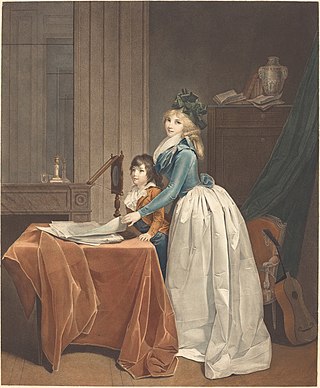
À la poupée is a largely historic intaglio printmaking technique for making colour prints by applying different ink colours to a single printing plate using ball-shaped wads of cloth, one for each colour. The paper has just one run through the press, but the inking needs to be carefully re-done after each impression is printed. Each impression usually varies at least slightly, sometimes very significantly.
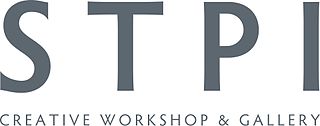
STPI - Creative Workshop & Gallery, Singapore is a creative workshop and contemporary art gallery based in Singapore that specialises in artistic experimentation in the medium of print and paper. To date, STPI has collaborated with over 90 artists from all over the world.

Jack Boul is an artist and teacher based in Washington, D.C., whose oil paintings, monotypes and sculpture are included in museums including the National Gallery of Art and the Phillips Collection.
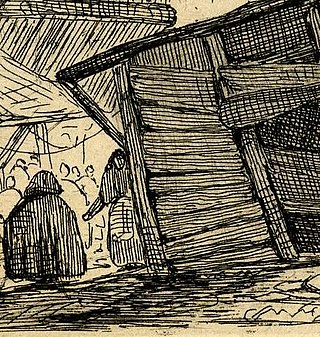
In printmaking, surface tone, or surface-tone, is produced by deliberately or accidentally not wiping all the ink off the surface of the printing plate, so that parts of the image have a light tone from the film of ink left. Tone in printmaking meaning areas of continuous colour, as opposed to the linear marks made by an engraved or drawn line. The technique can be used with all the intaglio printmaking techniques, of which the most important are engraving, etching, drypoint, mezzotint and aquatint. It requires individual attention on the press before each impression is printed, and is mostly used by artists who print their own plates, such as Rembrandt, "the first master of this art", who made great use of it.

Byron Gordon McKeeby (1936-1984) was an American artist, educator and master printmaker known primarily for lithography. McKeeby's interest dovetailed with a burgeoning contemporary community in advancing lithography as an art form. He was active in all form of print exhibition. He built a full scope printmaking department of rank at the University of Tennessee that exists today.
This is a timeline of 20th-century printmaking in America.
References
- ↑ "David Faber". Users.wfu.edu. 2005-08-15. Retrieved 2010-10-15.
- ↑ "The Corcoran 2005 Print Portfolio: Drawn to Representation". Corcoran.org. Archived from the original on 2010-10-11. Retrieved 2010-10-15.
- ↑ "Community Arts Cafe". Community Arts Cafe. Archived from the original on 2010-10-17. Retrieved 2010-10-15.
- ↑ "Art & Humanities - A Guide to Drawing, 8th Edition-9781111342722 - Daniel M. Mendelowitz - Cengage Learning". Cengage.com. Retrieved 2010-10-15.